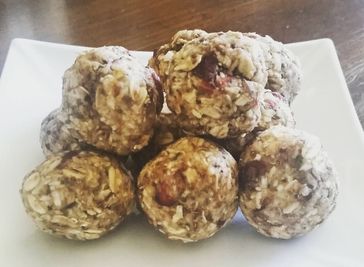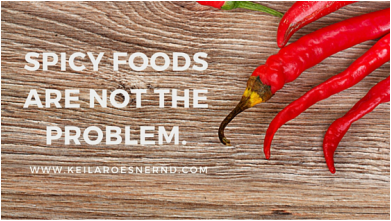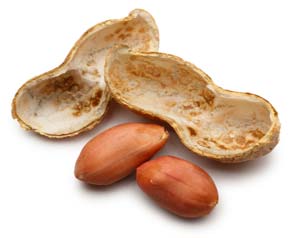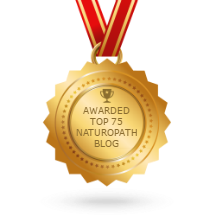 7 Steps for Optimizing Your Vitamin D and Enjoying the Sun (safely). Keila Roesner ND. 7 Steps for Optimizing Your Vitamin D and Enjoying the Sun (safely). Keila Roesner ND. I was on away on a girls’ weekend recently. A gorgeous sunny day exploring Niagara wine country (this ND enjoys a glass of wine too!), laughing our butts off and trying not to fall off our bikes. It was a perfect opportunity to work on my “base tan” for the year. As a fair-skinned gal of Irish descent… I’m prone to grow freckles and get very very pink. Unlike my husband who gets a gorgeous tan every year, I have to be careful. But I certainly don’t avoid the sun. Ever. But wait, isn’t the sun the root of all evil? Skin cancer, melanoma and awful peeling skin? If the sun going to kill me… how come my ancestors survived?  The link here is Vitamin D. Vitamin D is an essential hormone and we are designed to get lots of it by being outside in the sun, moving around outdoors and enjoying the world around us. The challenge is that many of us spend our days inside working avoiding the sun between 10-2 pm, wearing sunscreen with a high SPF every day under our makeup and long light layers we can become very deficient. This is a big deal. Vitamin D is critical for our immune system. Many of us know about Vitamin D for bone health - Vitamin D helps regulate calcium and phosphorus absorption and excretion in the body. This is why many products are fortified with a synthetic version. Run of the mill health issues like coughs, colds, allergies, flus and other common issues are related to low Vitamin D levels that compromise our immune function. Vitamin D also keeps our immune system communicating so that we reduce our risk of more serious issues like Type 2 Diabetes, osteoporosis, heart disease, cancers and other autoimmune diseases like multiple sclerosis and rheumatoid arthritis. Low Vitamin D is also related to thyroid disease, mental health issues and hormone health. Adequate vitamin D is essential for digestive health as well, and when we are deficient we get leaky gut. When we lack Vitamin D our immune system loses touch with itself and we are more likely to get sick. Who is at risk?
Where can you get it?
Next Steps:
Vitamin D keeps your brain sharp, skin glowing, immune system humming along and is an essential part of your life. Practice safe sun, but don't fear it! Keep on the sunny side,
2 Comments
 A delicious, healthy, simple vegan, dairy-free gluten-free make-ahead no-fuss snack. A delicious, healthy, simple vegan, dairy-free gluten-free make-ahead no-fuss snack. No-bake energy bites are the perfect healthy snack: easy to make, customize-able based on your pantry ingredients, and they store incredibly well in the freezer. Use this recipe as a guide but feel free to make substitutions based on your tastes. You can easily double – or quadruple this recipe, and kids can help. Perfect for last minute potlucks, people with food sensitivities and to throw together when you’re short on time and energy. Prep Time: 10 minutes Chill Time: 30 minutes Cook Time: nada Yield: 20-25 balls Ingredients:
Directions:
Other ideas:
 Creating a strong self-focused morning routine is one of the most important things you can do to set the tone for your day. Do you find yourself checking your email first thing in the morning and mentally answering questions… hours before you get into work? Rushing around in the morning, cramming breakfast in your mouth as you drive to work, already feeling that sense of impending anxiety and wishing you had more time for yourself? Feeling like your day is happening to you? Me too. Or rather, I used to feel that way. As an entrepreneur, I am more than a little obsessed with time management and productivity. As a Naturopathic Doctor, I am all about helping people create systems in their life to reach their health goals so that they can be more successful at work, and be the parent/partner/person they dream of being. I fell into the habit of auto-piloting my mornings, basing my schedule around when my husband needed to leave for work (ridiculously early), other roommates’ schedules and how much time I could spend falling into the black hole that is my Facebook Newsfeed. I would fly into the office just a few minutes before my first client, feeling a frazzled and unsettled. It is a recipe for anxiety and unproductivity. You feel like you are constantly chasing your tail and wind up frustrated by your lack of accomplishment at the end of the day. You stay up late catching up… or watching Netflix and always feeling perma-tired. Recently, I’ve been experimenting with a new “system”. Most successful entrepreneurs, top earners (C-office types) and the calmest people I know get up early. As a night-hawk born of two musicians, this concept is totally alien to me. I’ve gotten into the habit over the past few years, however, due to my husband’s schedule and the desire to spend time together before the day gets crazy. It’s actually very peaceful to be up and moving before the rest of the world. Once I’m up, I never regret it. Enter the Morning Triathlon: a super efficient start to the day to help you feel healthier, happier and more successful. Here’s why it works: By starting your day focusing on YOUR needs, you set a strong foundation for the rest of the day. Your email inbox and work day are full of other people’s demands for your time and energy… but by starting and ideally ending the day focusing on yourself, you will feel calmer and more productive. I call this concept “book-ending”. Ie. You book-end your day getting in the right frame of mind for your day in the morning, and then winding down in the evening. Here’s how you do it: Figure out how much time you have, and divide into three blocks: Mental, Movement, Mindful/Meditate. This is your Morning Triathlon. Ideally you have about 15 minutes or longer. Skip the time you spend reading the news on your phone.
My morning routine starts like this:
Some days I use a 15 minute block of time, other days I have longer. I never regret getting up early or taking care of myself. Self-care is vital to your health. Get my NEW Guide Calm the F*** Down: 5 Proven Strategies to Take Care of Yourself In my next blog post, I’ll share with you my favorite ways to build the perfect bedtime routine to help ward off insomnia. What are YOUR favorite ways to start your morning? Comment below! In health, Dr. Keila Roesner BHSc ND
 Conquer the common cold like a boss. Conquer the common cold like a boss. The common cold: It happens to the best of us...but what if you could prevent it? Whether you pick it up from your kids at daycare or there’s something going around the office it might seem inevitable to catch a cold once a year… or more. Maybe not. The common cold is used to describe a cluster of typical symptoms - sneezing, sinus congestion, runny nose, sore throat, and headaches – but can actually be caused by more than 35 different viral strains. And each of these strains can adapt and mutate. So yes, there is ALWAYS something going around. The question is: are you vulnerable? While we commonly think of October-March as “cold and flu season”, I tend to disagree. Yes, viruses are more common during this time. On the other hand, we are also busier and more stressed. Between Halloween, Thanksgiving, Christmas/Hannukah/Kwanza, New Years, Valentines Day and Easter sugar consumption is at an all time high. Most Canadians are deficient in Vitamin D – a potent immune support – unless we are also snow birds. We spend a lot more time indoors, breathing recycled air. So while colds are more common, we also have the odds stacked against us and our bodies aren’t always able to ward off viruses and bugs. The trick is building up your body’s resistance – since coming across the cold is inevitable – so that you are better able to withstand or bounce back quicker. 1. Eat more colorful vegetables. Different colors of vegetables offer different vitamins, antioxidants and healing properties so it’s a great idea to change up what you are eating. Almost all of us could stand to eat more too. Aim for 7 + servings per day. One serving is 2 handfuls of greens or 1 cup of other veggies. 2. Reduce exposure. Wash your hands with regular soap and water. Unless you are required to use hand sanitizer skip antibacterial hand soaps and sanitizers as many contain an ingredient called triclosan that is a known hormone disrupter. While we can’t always avoid exposure, keep your distance from people that are sick. Bring your own pen to the bank, keep tissues handy and wipe down common area surfaces with soap and water. 3. Go to bed. Getting enough sleep throughout the year is crucial. If you do get sick, stay home and rest to avoid infecting others. Unless you absolutely have to be somewhere, skip over-the-counter decongestants that contain acetaminophen… they are incredibly dehydrating. Your best bet is NOT pushing through the cold, but allowing your body the down time that it needs. While you’re at it, trying Magic Socks. 4. Drink lots of fluids. Ginger tea is one of my favorites, and plain water hot or cold is essential. Sneezing and coughing are incredibly dehydrating! Keep a humidifier in your bedroom also. 5. Make an individualized plan. Every year I run an Immune Booster program with my clients to keep them in tip top shape throughout the season. I find that a combination of herbals, homeopathics and vitamins customized to their needs, along with the above treatments, has been incredibly effective for reducing the risk of colds & flu and in the event that they do get sick, it is much less severe and passes quickly. What are your favorite go-to treatments to get over a cold? Comment below! If you found this article interesting please share. Looking to prevent the cold like a boss? Book an Immune Support visit with me to get started. References:
 There's a burning fiery pit in your chest. It's not a heart attack. You've checked with your doctor before. It's feels heavy, uncomfortable and burns. At your last visit you were told that you probable have GERD. And you think, "what a goofy name for something that feels like hell!" Heartburn, or Gastroesophageal Reflux Disease (GERD) accounts for one out of three primary care visits, and has been increasing quite dramatically over the last two decades (1). It's now estimated that 18-27% of adults in North America experience heartburn at least once weekly (2), and many experience it daily. Which absolutely sucks. This sharp increase can be attributed to rising rates of obesity, and is more common amoungst smokers and with age. Common symptoms of GERD include:
A diagnosis of GERD is often made at the physicians office, and then commonly, anatacids (Gavison, Rolaids, Tums), H-2 receptor blockers (Pepcid AC, Zantac) or Proton pump inhibitors (PPIs, like Prevacid, Losec etc.) are recommended to "stop the burning". If it helps, it is assumed that GERD was your problem. But we seem to have gotten a little caught up with this idea that burning = too much acid. If you've read my blog "Why Does My Stomach Hurt?" you'll see that it is a little more complicated than that. Heartburn typically stems from one of four causes:
Very rarely have I ever seen increased stomach acid cause heartburn. Rather, it is most likely a combination of low stomach acid, over-eating and a weak lower esophageal sphincter. Zollinger-Eillison Syndrome is the only known cause of increased stomach acid, and is a very rare condition where one or more tumours in the small intestine or pancreas (gastrinomas) secrete a large amount of the hormone gastrin which then causes the stomach to produce too much acid (5). In summary, your stomach is probably not too acidic. But something else is going on, making your uncomfortable. Don't you want to find out.. and fix it? If you or someone you love is experiencing heartburn and want to treat the cause, please book a Free 15 Minute Health Discovery Session with me. In our next few blogs, I will outline how to know if GERD is part of a larger puzzle and how you can start improving it naturally. Until then, happy digesting! References:
 If you’re going to cook up a satisfying sex life, you need the right high quality ingredients, in the right amounts... and hold the stress. Likewise, when our body produces our main sex hormones, testosterone, estrogen and progesterone, we need some basic ingredients available in the kitchen, which in this case is our liver, ovaries (testes in men) and adrenal glands. We need enough of all of these in order to have a healthy libido and enjoy sex. And sex is a great way to relieve stress. Cholesterol is the main building block of many hormones, including our sex hormones and the stress hormone, cortisol. When we restrict fat, our body will upregulate the production of cholesterol by the liver to ensure that you have the raw materials available. During production, cholesterol is modified several times. Eventually, the raw materials come to a fork in the road, where the body can either continue on to manufacture our sex hormones, or switch over to making cortisol. Both of these directions are essential to a healthily functioning body and ideally, a balanced ratio is maintained. In our fast-paced, over-booked lives many of us produce excess cortisol in order to keep up. Cortisol, taking one path, competes for the same binding sites in the body as progesterone which is the precursor to our other sex hormones. Symptoms of excess cortisol include weight gain around the middle, feeling tired and wired, poor sleep, irregular menses, blood sugar dysfunction, muscle fatigue, poor stress response long term... and low sex drive (because who has the time to get it on with that huge to-do list?). Furthermore, we are likely to experience abnormal production of progesterone, estrogen and testosterone because the raw ingredients are not available in the right quantities. Just like trying to make a recipe when you are short on groceries, the end result can get interesting. Often, we will experience a combination of excess and deficient hormone levels which will typically affect our resistance to stress, metabolism, thyroid function, digestion and sexual function. Again, our libido can suffer. And just like learning to cook requires time spent cooking, when we are stressed, our libido tends to suffer yet having sex can be one of the best things you can do to relieve that stress! In order to balance these complex hormones, stress management is essential as is eating well and exercising. The goal is to have enough ingredients to produce these hormones in the right amounts, so that we have enough energy, healthy libidos and can age well. In other words, we need to have a clean, organized and well stocked kitchen, a good recipe and enough time to cook. Here's what you can do:
If you're suffering from low libido, a Naturopathic Doctor trained in the use of bioidentical hormones can help you to test your hormones and create an individualized treatment plan to ensure that you live a healthy, happy balanced life… and a great sex life. You can also check your hormone score to see if you might have some imbalances. Want to go further? Book your free 15 minute health strategy session to learn more about balancing your hormones (and improving your sex life).. naturally. In health, Dr. Keila  "Dr. K, I'm doing great... except that I want to scratch my eyes out, my nose keeps running and I'm going to start charging that frog in my throat rent!" lamented one of my patients this week. And she isn't alone. Seasonal allergies affect 1 in 25 Canadians, according to the Canadian Allergy, Asthma and Immunology Foundation. Allergic rhinitis, or "hay fever", or these damn allergies can present as watery itchy eyes, runny nose with clear mucous, sinus congestion and pressure, itchy tongue and palate, a dry scratchy throat, feeling fatigued, poor concentration. This means lower productivity at work, an increased risk of asthma and an expensive trip to the pharmacy or health food store trying to find relief. Windsor and Toronto are some of the worse cities in Canada to live in with respect to pollution and ragweed. Here in Stratford, we are surrounded by a lot of farmland and trees, which also translates to pesticides and tree pollen. Despite being convenient for travel, this Highway 401 corridor that I and my patients call home can cause some decided health issues from early spring until late fall. So what's an allergy sufferer to do? 1. Catch the culprit Most seasonal type allergies are IgE-mediated immune reactions. A simple skin or blood test can be ordered by your family doctor or Naturopathic Doctor to determine the cause of your symptoms. Common culprits are tree pollens, ragweed, moulds, and dust mites. These can be made worse by certain foods, particularly food sensitivities. 2. Support your immune system Eat a diet high in fresh fruits and vegetables for lots of Vitamin C, good quality probiotics recommended by your health care provider, fermented foods like kombucha, sauerkraut or kefir, and healthy fats. Minimize sugars, processed foods and alcohol as they will suppress your immune function and can contribute to mucous production. 3. Create a customized plan Your family doctor or allergist might also recommend avoiding the allergen if possible, antihistamines or decongestants. Please be aware that decongestant nasal sprays often cause rebound congestion once you discontinue their use, so these should only be used short-term. In my practice, I recommend an individualized supplement program including homeopathics, and nutraceuticals, dietary support and at-home care. I like to recommend using a neti pot filled with a warm sterile saline solution to rinse out the sinuses twice daily during allergy season. It really works! BONUS I also recommend Allergy Booster "shots" preventatively for patients that predictably experience symptoms at this time of year. A simple, low-cost oral solution that can help to improve our immune function and reduce the severity, this is one of my favorite ways to stay on top of allergies. Many of my patients have experienced a dramatic improvement in their allergy symptoms after only a few doses and no longer need to rely on allergy medication. If you or your loved ones are suffering from seasonal allergies, you can book a free 15 minute health strategy session to learn more about treating your allergies.. naturally. In health, Dr. Keila  My cat, hiding from me. My cat, hiding from me. I got home at 6:30pm, after a long day of work. Angry. Hungry angry. Hangry. Even my cat was avoiding me. I went straight to the peanut butter jar, dug out the chocolate chips and went to town with my favorite sugar + fat snack. There was no way I could wait to make dinner. I needed a fix. It's hard to be graceful eating peanut butter out of the jar. I'm human, I fully admit it. My eating habits had a long way to go when I first started University, starry-eyed and bound for medical school. Over the first two years, I gained 15 lbs, started losing handfuls of hair, got easily overwhelmed and developed terrible sleeping habits. It was a rough go. By the time I started my Naturopathic medical training at the Canadian College of Naturopathic Medicine I had started making some very significant changes to diet. The biggest changes were cutting out processed crap (like the yellow powdered chicken broth that was previously a staple in my cooking), limiting wheat and increasing fat in my diet. Two years ago, however, I really hit the nail on the head. A colleague of mine, Dr. Erica Robinson, had been a big proponent of the Paleolithic Diet for quite sometime and it got me thinking. The Paleo Diet The Paleolithic Diet is based whole foods - lot of vegetables, a modest amount of fruit, lots of healthy fats and high quality protein - and is meant to simulate the way our ancient human ancestors during the Paleolithic era might have ate. At the same time, this style of eating limits ALL grains, beans and legumes, dairy, sugars, processed foods and alcohol. I know, it does sound drastic at first. Why would you do this to yourself??? We, as a species, have evolved over several hundred thousand years eating a certain way - foraging lots of greens, fruits, edible tubers, nuts and seeds, and when we could find it, meat including the higher fat organ meats. We moved a lot more, slept when the sun went down and had a heck of a lot more downtime to rest and play than we do today. It wasn't until the Neolithic era when agriculture really caught on that we started to settle down and dramatically increased the amount of grains and legumes in our diet. We stayed in one place, had a steady diet of grains, legumes and beans in addition to what those ancient ancestors ate. We had food security. Yes, that did happen thousands of years ago, however even that amount of time is only a small blip compared to the many years of eating in the hunter-gatherer style. The argument is that we are genetically evolved to be eating in this ancient, Paleolithic style, and our genetics are still playing a losing game of catch-up to our agriculture loving ancestor's grain and bean-based diet. Our DNA has no hope in hell to catch up with our modern diet full of genetically engineered wheat, corn, soy, processed fats, sodium, alcohol, antibiotic-laden dairy and other "food products". The Standard American Diet (SAD, for short) is forcing us to fight a bloody, uphill battle against our genetics... and it is one that we can't win. Numerous scientific studies have detailed that the SAD diet full of convenience but absolutely lacking nourishment are direct contributors to heart disease, diabetes, strokes, obesity and cancers amoung MANY other concerns. Yep, these are our biggest killers and we keep getting sicker, fatter, tired, depressed and miserable. So what did this peanut butter-loving Naturopath (to be) do? I read a LOT of books, including these: The Primal Blueprint: Reprogram Your Genes for Effortless Weight Loss, Vibrant Health, and Boundless Energy by Mark Sisson Paleoista: Gain Energy, Get Lean, and Feel Fabulous With the Diet You Were Born to Eat by Nell Stephenson The Paleo Solution: The Original Human Diet by Robb Wolf Practical Paleo by Diane Sanfilippo Make It Paleo: Over 200 Grain Free Recipes for Any Occasion - Bill Staley and Hayley Mason Well Fed: Paleo Recipes for People Who Love to Eat by Melissa Joulwan Dr. Loren Cordain's work and these blogs: Mark's Daily Apple NomNomPaleo Paleo OMG The Clothes Make the Girl I got rid of the grains, the sugar, beans, cut out dairy and threw out anything my great-great-great (x50) grandmother would not recognize as food. I increased the amount of produce I ate, set a limit of max 2 servings of fruit, dramatically increased the healthy fats, had high quality protein with each meal and got to work cooking. I seriously upped the quality of nutrition in my already "healthy" diet. I began to walk everywhere, made yoga a part of my day and allowed myself time to relax. I lost the 15 pounds of stress fat I put on through university and med school. I completely cured my insomnia. My acne cleared. My periods got more regular. I stopped losing handfuls of hair. I got used to saying "No thank you" to well-meaning friends and relatives offering me foods that made me feel ill. I felt truly empowered, knowing that I choose to take my health in my hands every day, that there are answers and that feeling ill did not have to be a given. And I was a heck of a lot more pleasant to be around. Are you interested? Book your free health consultation with me to start living the healthy life you know you deserve. “The food you eat can be either the safest and most powerful form of medicine or the slowest form of poison.” - Anne Wigmore Anne, you are right. I choose medicine. Awesome, tasty medicine. Check out how we do it! - Dr. Keila (no makeup Sunday) Xo
Food can be the perfect medicine... or the best poison.Our body does the best it can and can only run off the fuel we give it. While most of us try to eat healthily the majority of the time, sometimes the "good" foods we are regularly recommended can make us feel ill. If we are taking in foods that don't agree with us, regardless of which Food Guide or expert recommends them, our body will mount a reaction in order to tell us that we shouldn't eat it. If we continue to consume these foods, the body turns up the dial until we have to listen. Your Cheat Sheet to Food Reactions:
Timing is everythingOne reason it can be so difficult to identify a food reaction is that we may react hours, days or even weeks after ingesting the food in question. If you tend to eat a highly varied diet or eat the same foods over and over, pin-pointing that one meal can be a challenge, particularly if you started to feel crummy a few days later. Trust your gut..but look for other clues.The gut is the gateway to the rest of the body. If a food reacts in our gut, it impacts not only our digestive function, but the rest of our body as well. In particular, the immune system, neurological and reproductive systems get involved. Symptoms of a food sensitivity can include:
Your symptoms may evolve over time as well. For example, I notice with myself that when I eat gluten I start to feel very sleepy and have an immediate-onset brain fog. If I continue to ignore my body and eat more - I am the first to admit I am very human and not immune to a fresh slice of bread from time to time - I get some pretty intense stomach cramps and constipation. Since I so seldom eat it, I notice this right away. When I was in university on a tight student's budget, I tended to a lot of pasta (it was cheap, quick and filling) I suffered from debilitating sleep attacks plus all those digestive symptoms, weight gain around the middle and acne. Eventually I realized from trial and error that it was worth spending a few extra bucks, saving the gluten/starch binges for a very occasional treat in order to be more productive, focused, energetic and healthy. As you can see, it certainly goes beyond the digestive system! So how do I know if there's a problem... and what can I do about it?If you're asking yourself this, you've come to the right place!
Working with your family doctor or allergist, standard allergy testing is often recommended to test for IgE-type reactions. Treatment then involves taking an antihistamine (Reactine, Benedryl etc.), epinephrine (eg. carrying an Epi-pen) and/or complete avoidance. However, by now you will realize that IgE reactions are just a small part of the picture. Here is how I treat food reactions:
If you or someone you know is suspects that a food reaction might be contributing to feeling unwell, I would like to offer you a complimentary 15 minute consultation with me to discuss your concerns. BYou have a busy life, active family and a demanding job. You asked for more and I was listening. And I want you to know that I get it. Your health is important, but so is the rest of your life. That's why as of June 2014 I will be adding an additional set of evening hours for Naturopathic and acupuncture appointments to serve you better. So, if you work 9-5 and can't get out of the office, work alternating shifts or simply function better later in the day I can accommodate your schedule better than any other health care provider in Stratford, ON. Book your FREE 15 minute consultation and find out why Naturopathic Medicine can help you feel better than ever. You can learn more about Naturopathic Medicine here. |
Top 75 Naturopath Blogs & Websites For Naturopathic DoctorsAuthorDr. Keila Roesner is a Naturopathic Doctor. When not treating patients she is also an enthusiastic barefoot-strolling, music-loving, yoga-doing kitchen wiz - who also happens to be a wrestling fan. Categories
All
|
Let us take you from hormonal to whole.
|
Dr. Keila Roesner, BHSc ND
Naturopathic Doctor, Hormone Warrior and Your Wellness Cheerleader 247 Church Street, Stratford ON N5A 2R7 (519) 273-0900 [email protected] |
|








 RSS Feed
RSS Feed